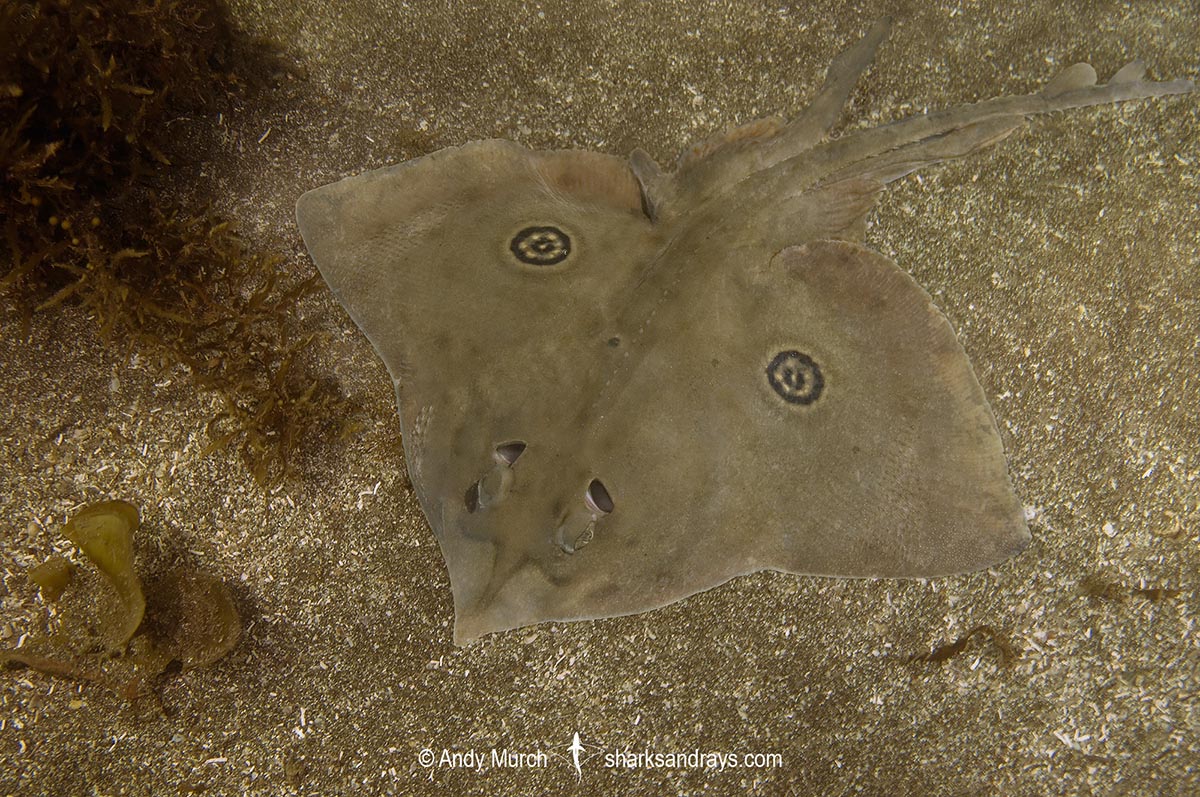Common names
Rasptail Skate, Velez Skate.
Binomial
Rostroraja velezi.
Synonyms
Raja velezi.
Identification
A medium-sized skate with a wide kite-shaped disc. Disc width ~1.3 x disc length. Snout moderately long, obtusely angular or broadly rounded, with a thin, protruding tip. Snout length ~2.4 x orbit length. Eyes large. Anterior margins of pectoral fins weakly undulate. Pectoral apices angular or narrowly rounded. Disc sparsely covered in granulations in juveniles, mostly on snout and tail, more widespread in adults. Smooth ventrally. Thorns present around orbits, on shoulders, and along midline to first dorsal fin. Midline thorns larger near nape and on tail. Lateral thorns also present on tail. Pelvic fins large, strongly notched. Anterior pelvic lobe well defined but much shorter than posterior lobe. Tail broad, depressed, shorter than pre-cloacal disc length. weak lateral skin folds on tail. Dorsal fins rounded, slightly separated. Caudal fin very small.
Colour
Dorsum brownish with a single pair of well defined pectoral ocelli consisting of concentric light and dark circles; central spot may be pale or dark. Tail unmarked. Ventrum mostly white, dusky at pectoral apices and along posterior margin.
Size
Maximum length ~83cm. Length at hatching unknown.

Conservation Status
VULNERABLE
The Rasptail Skate (Rostroraja velezi) is captured in commercial trawl and artisanal gillnet and longline fisheries, which are extensive and poorly managed throughout much of its range.
It may have some refuge on the upper continental slope and in the Galápagos Islands, but overall, it is estimated that the Rasptail Skate has undergone a population reduction of 30–49% in the last 30 years.
Habitat
Warm temperate to tropical seas. Demersal mostly on sand and mud. From 30-300m.
Distribution
Eastern Pacific. The rasptail skate occurs from the northern Sea of Cortez to northern Peru, including the Galápagos Islands.
Reproduction
Oviparous. Life history poorly known.
Diet
Rasptail skates mainly feed on decapod crustaceans and small bony fishes.
Behavior
Migratory patterns poorly known. Found in 30m in La Paz Bay in April.
Reaction to divers
Poorly known.
Diving logistics
The rasptail skate is rarely if ever encountered by scuba divers. I encountered this species while accompanying researchers in La Paz Bay in April. It was tagged and released in ~30m so a deep search on sand or mixed bottoms at this depth may facilitate encounters.
What’s new
View our full list of updates
Similar species
California Skate Beringraja inornata Distinguishable by covering faint pale spots and much smaller, simpler ocelli.
Cortez Skate Beringraja cortezensis Distinguishable by covering of dark black spots and simpler ocelli.
